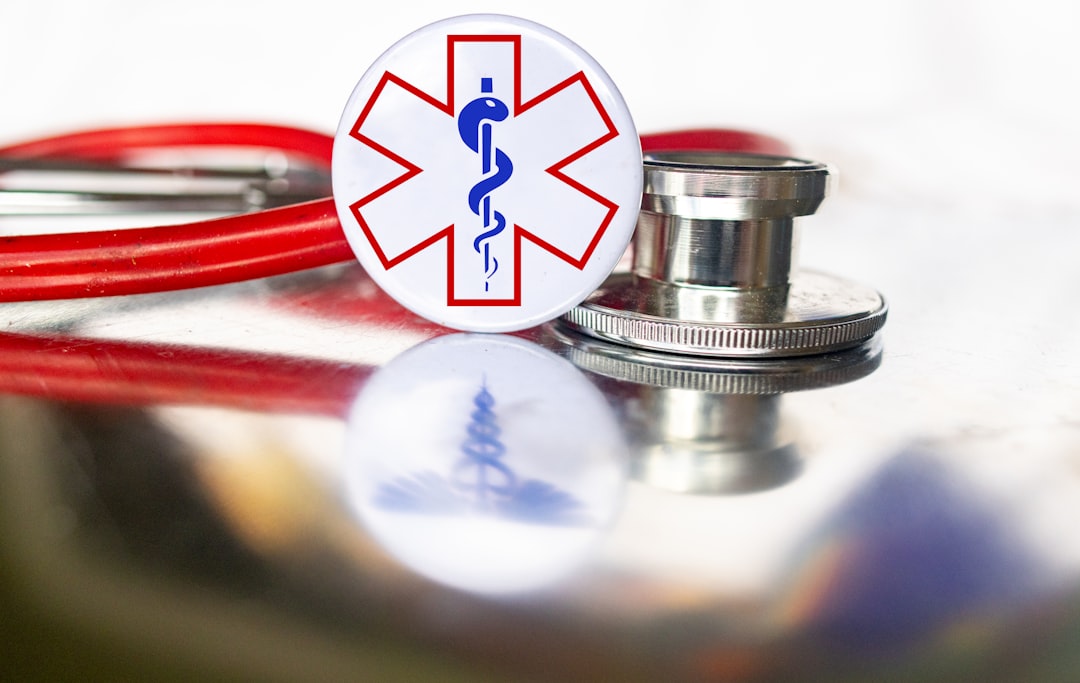

Engage prospects with a scan and streamline customer engagement with FREE QR code marketing tools by Sona – no strings attached!
Create a Free QR CodeFree consultation

No commitment

Engage prospects with a scan and streamline customer engagement with FREE QR code marketing tools by Sona – no strings attached!
Create a Free QR CodeFree consultation

No commitment
In today’s digitally connected workplaces, the demand for fast, high-quality feedback in occupational health services exposes persistent pain points: manual reporting stalls response times, paper-based systems lose valuable insights, and missed or anonymous interactions leave critical problems unseen. Many organizations striving for compliance and seeking proactive wellness improvements face the frustration of low engagement, a challenge heightened by fragmented reporting processes and inconsistent feedback loops.
QR codes have emerged as a practical bridge, seamlessly connecting the physical work environment to robust digital feedback channels. Employees, often too busy or reluctant to fill out lengthy forms, can scan a visible code to report issues, provide ergonomic suggestions, or participate in wellness surveys instantly. By removing barriers such as app downloads, login friction, and cumbersome paperwork, QR codes address the widespread issue of missing crucial input from both engaged and hesitant voices. This approach boosts response rates and ensures comprehensive, actionable data flows directly into the hands of decision makers.
Leveraging QR code-driven feedback transforms occupational health services into data-rich, responsive operations. Organizations gain not only a means to meet regulatory documentation demands but also a scalable way to surface emerging risks, identify disengaged employee segments, and track wellness improvements in real time. The result is more agile decision making, stronger compliance, and a healthier, safer workplace culture that evolves with the needs of its people.

Many occupational health teams still struggle with missed high-value feedback opportunities. Paper surveys sit in break rooms, suggestion boxes remain sparse, and emailed forms get buried without follow-up. QR codes create a direct, visible link between physical spaces and digital data capture, addressing these barriers to participation and reducing the risk of health and safety insights being lost or delayed.
Start by mapping the moments where feedback matters most: after an incident or near miss, during ergonomic assessments, following clinic appointments, and at points where safety instructions are displayed. Then replace analog processes with QR-enabled alternatives that take seconds to complete. The goal is to make scanning the default action for reporting, requesting help, or sharing suggestions.
With this foundation, QR-driven workflows become the connective tissue between frontline experiences and organizational action. Over time, the data you capture will reveal which teams are thriving, where risks are rising, and how to target resources for the greatest impact.

Traditional feedback channels in occupational health such as suggestion boxes, printed forms, and general inbox emails suffer from poor visibility and weak connection to day-to-day workflows. Shift workers, field teams, and contractors often do not see reminders in time, and busy managers may postpone or forget to submit reports. These operational gaps increase the risk of unresolved hazards and reduce opportunities for data-driven improvements.
QR codes address these issues with frictionless access and measurable outcomes. When an employee can scan, submit, and move on in under a minute, participation rises naturally. When your team can update questions in real time, iterate on the fly, and analyze scans by location or role, insights become timely and actionable. The combination moves health and safety programs from reactive to proactive.
By meeting employees where they are in plants, warehouses, clinics, offices, and remote sites, QR-enabled feedback creates a culture of reporting and continuous improvement. The barriers shrink, the data grows, and operational decisions become sharper and faster. For sector nuances, explore Sona QR’s healthcare guidance.

Selecting the right QR format helps protect data, maximize engagement, and streamline workflows. Different moments call for different destinations, and a tailored mix will outperform a single one-size-fits-all approach.
Two broad categories exist. Static QR codes are fixed and typically used for non-sensitive, unchanging destinations like safety manuals or public-facing resources. Dynamic QR codes point to short URLs that can be edited later, enabling you to update forms, add conditional routing, and capture analytics. For most health feedback and incident reporting, dynamic codes are the safer and more effective choice.
When in doubt, choose dynamic codes for anything that touches feedback, reporting, or protected data. Pair them with secure platforms that enforce role-based access, audit trails, and encryption to keep information confidential.

QR code adoption accelerates when codes appear where health interactions are frequent and convenient. The aim is to intercept routine moments and turn them into quick, meaningful actions that support safety, wellness, and compliance.
Think through the employee journey from arrival to shift change to post-appointment follow-up. Look for moments with historically low engagement and place QR codes where a scan is the easiest next step. Make the aha moment obvious with a short, benefit-driven call to action.
These placements produce measurable engagement patterns that reveal both high-performing areas and chronic blind spots. With that visibility, occupational health leaders can allocate resources more effectively and validate program ROI with hard data.

Use cases that align with existing routines and known pain points deliver the fastest wins. The following examples address common failure modes such as delayed incident reporting, low post-visit feedback, and underreported ergonomic issues.
Start with the scenarios that impact safety and compliance most, then expand into wellness and culture-building initiatives. The more connected your feedback network becomes, the more robust your analytics will be.
These use cases turn everyday interactions into signal-rich moments. Each scan not only solves a local task but also feeds a larger dataset that makes your program smarter over time.
Every scan contains information about intent, context, and timing. By deploying unique QR codes per location, department, and workflow, occupational health teams can create segments that enable precise follow-up and targeted outreach. This is especially useful when repeated non-responses hide deeper engagement issues in particular roles, shifts, or sites.
Define the segments that matter for your organization. For example, a facilities team may need different prompts than an office-based team. Night shift employees may prefer silent, short-form surveys while day shift employees may respond better to QR-driven links delivered through digital signage. Use these distinctions to personalize nudges and support.
For targeted follow-ups, use Sona’s Playbook Intent-Driven Retargeting.
With these practices, you will move from broadcast to targeted engagement. Over time, participation becomes more equitable across teams and shifts, and the most at-risk areas receive the attention they need.
Occupational health programs span print, digital, and in-person channels. Without a unifying thread, employees encounter scattered messages and duplicated asks. QR codes create a common entry point that threads communications together so that calls to action feel consistent and data collection is unified.
Map each channel to a specific outcome and align the QR destination accordingly. Keep calls to action consistent across poster, email, and intranet versions so employees learn to expect a familiar, low-friction experience. Use a central platform to manage codes and track performance across all placements.
Centralized management of QR codes ensures analytics are visible end to end. Your team avoids conflicting messages and redundant outreach, and employees experience a clear, unified journey.
Many occupational health initiatives stall due to unclear objectives, inconsistent deployment, or weak tracking. QR campaign execution is no exception. Before launching, align stakeholders on goals, guardrails, and success metrics. After launch, monitor performance closely and iterate quickly.
Use the following process to avoid common pitfalls and maximize results. Each step can be executed in days, and together they form a repeatable playbook for every new location, workflow, or program.
Identify the precise gap you need to close. Examples include unreported near misses on the third shift, low response rates for post-appointment follow-up, or limited feedback on new ergonomics equipment. Select a single high-impact use case first so you can quickly demonstrate value and secure buy-in for broader rollout.
Tie the use case to a measurable outcome such as increasing incident reporting by 50 percent, cutting triage time by 30 percent, or boosting post-visit survey completion to 60 percent. When targets are clear, content and placement decisions become straightforward.
Use static codes for fixed, non-sensitive resources like PDF safety manuals. Choose dynamic codes for anything that requires tracking, content updates, or sensitive data handling. Dynamic codes let you change destinations without reprinting and provide the analytics you need to improve.
If you want audience segmentation, retargeting, or downstream automation, dynamic codes are mandatory. Platforms like Sona QR provide link editing, role-based access, and encryption that supports compliance in occupational health contexts.
Brand the QR frame, add a concise call to action, and provide a one-line benefit statement such as Scan to report a safety hazard in under one minute. Test scannability on different phones, at various distances, and in the lighting conditions where the code will live. Confirm the landing page is mobile-first, short, and accessible.
Include visual prompts that match the physical environment. For example, in loud areas, use high-contrast colors and larger codes. In sterile or clinical areas, keep designs clean and legible. Always add a short link fallback for accessibility.
Place codes where employees naturally pause or seek information. Prioritize time clocks, break rooms, first-aid stations, equipment cages, and near PPE dispensers. For distributed teams, add codes to direct mail, job tickets, or mobile app announcements.
Roll out in phases. Start with a pilot in one department or site, capture benchmarks, then expand across similar environments. Version each code by location so you can compare engagement and optimize placements.
Monitor scan volumes, completion rates, and time to resolution in real time. Use A/B tests to compare calls to action, question wording, and the order of survey items. When you see drop-offs, shorten forms or move essential questions to the top.
Integrate scan data with your HRIS or EHR so submissions trigger alerts, tasks, or case creation. Sona QR can sync activity to tools like Salesforce or your case management system, ensuring no signal is lost between channels. For CRM workflows, see Sona’s blog post Integrate Sona with HubSpot.
A robust platform should automate tracking, data syncing, and regulatory archiving. That frees occupational health teams to focus on prevention, coaching, and care rather than manual data work.
A persistent weakness in traditional feedback systems is the lack of actionable analytics. Paper forms get misplaced, email inboxes overflow, and even when data is collected, it often remains siloed. QR-enabled programs eliminate these gaps by capturing structured data at the source and connecting it to your operational systems.
Go beyond counting scans. Measure how engagement translates into outcomes that matter, such as incident reduction, faster closeout of hazards, improved employee satisfaction, and fewer compliance findings. The more you connect scan behavior to real-world results, the more confidently you can scale.
With Sona QR and Sona.com, teams can go further by unifying fragmented touchpoints across stages of the employee experience. Sona QR captures real-world scan data and form activity. Sona connects those signals with website visits, training participation, emails, and CRM records to build a complete picture of progression from first scan to resolution. This puts you in a position to prove the value of your programs with confidence.
Consistent results depend on disciplined execution. Poor code placement, generic messaging, and lack of follow-up are common reasons deployments underperform. Build your playbook around practices that are simple to execute and easy to scale.
Choose the tips that best match your environment. For example, manufacturing sites benefit from large-format posters and equipment labels, while clinics and offices may rely more on appointment cards, intranet modules, and digital signage. Align each tactic with your team’s capacity to monitor and respond.
For creative deployment, consider placing QR codes on PPE dispensers to collect fit and comfort feedback, or inside incident kits to guide staff through a quick, standardized report. These thoughtful touches turn brief, high-pressure moments into structured signals your team can act on.
Forward-thinking occupational health teams are using QR codes to surface invisible risks and energize participation. The most successful programs pair simple scanning experiences with strong follow-up and transparent outcomes.
Creative teams also place QR codes on ergonomic toolkits, linking workers to short setup videos and a 90-second comfort check. Others include QR codes on onboarding badges so new hires can ask questions anonymously during their first 30 days. These small innovations normalize scanning as a helpful, everyday part of work.
Strong QR programs combine secure technology with human-centered design. Compliance missteps, lack of testing, and poor placement can undermine value quickly. Conversely, simple habits like piloting with end users and reinforcing calls to action can transform results.
Common errors include using free, unsecured generators for sensitive workflows, failing to version codes by department, and letting form lengths creep upward. Keep the experience lightweight, secure, and intentionally mapped to decisions your team can make.
QR codes have matured into an essential occupational health feedback tool. They address long-standing frustrations around missed engagement opportunities, inconsistent participation, and disconnected reporting by turning every physical and digital touchpoint into a secure, actionable channel. This improves regulatory compliance, surfaces hidden risks, and drives measurable gains in safety and wellness across the organization.
With intentional planning and smart, compliant QR deployments, occupational health leaders can convert feedback into rapid response. If you are ready to begin, pilot one high-impact use case with dynamic codes, instrument it with Sona QR for tracking and routing, and use early insights to refine and expand. Start creating QR codes for free.
QR codes have transformed occupational health services from traditional feedback methods into dynamic, real-time engagement tools. Whether it’s gathering precise employee insights, improving service quality, or streamlining feedback collection, they replace cumbersome paper forms with instant, mobile-friendly actions that capture valuable data to enhance workplace health programs. Imagine knowing exactly which health initiatives resonate most with employees—and being able to respond immediately to their needs.
With Sona QR, you can create dynamic, trackable QR codes in seconds, update feedback campaigns instantly without reprinting materials, and link every scan directly to actionable insights. No more missed feedback opportunities or delayed responses—just smarter, more effective occupational health services that drive measurable improvements. Start for free with Sona QR today and turn every scan into meaningful feedback and healthier workplaces.
Key components include incident reporting, ergonomic assessments, workplace wellness surveys, post-appointment feedback, and integrated data tracking to improve safety and compliance.
By using tools like QR code-driven feedback to quickly capture and address health and safety concerns, organizations can reduce hazards, improve wellness, and create a safer, healthier workplace that supports employee productivity.
Occupational health services must meet regulatory documentation demands, maintain compliance with privacy and security standards, and ensure timely incident reporting and follow-up according to industry-specific regulations.
Select a provider that offers secure, compliant platforms with dynamic QR code capabilities, integrated analytics, seamless syncing with HR or health records, and strong privacy controls to support your specific feedback and reporting needs.
Best practices include starting with a high-impact use case, using dynamic QR codes for feedback collection, placing codes in visible, high-traffic areas, setting measurable objectives, piloting with real users, training supervisors to encourage scanning, and integrating data with existing systems for follow-up.
Use Sona QR's trackable codes to improve customer acquisition and engagement today.
Create Your FREE Trackable QR Code in SecondsJoin results-focused teams combining Sona Platform automation with advanced Google Ads strategies to scale lead generation

Connect your existing CRM

Free Account Enrichment

No setup fees
No commitment required

Free consultation

Get a custom Google Ads roadmap for your business






Launch campaigns that generate qualified leads in 30 days or less.
